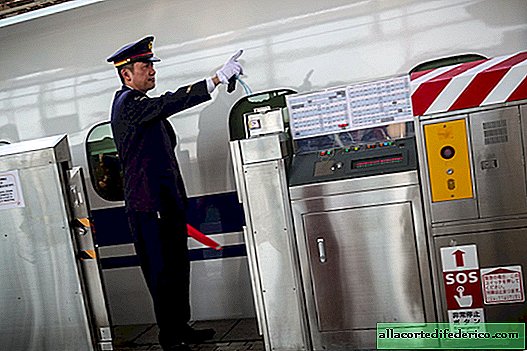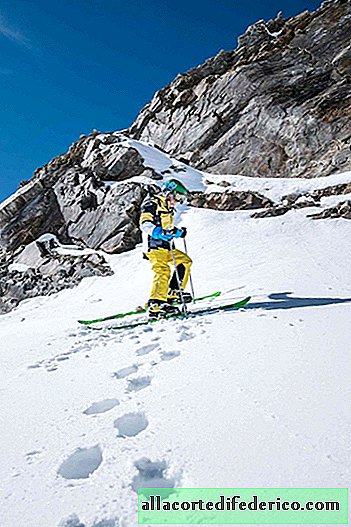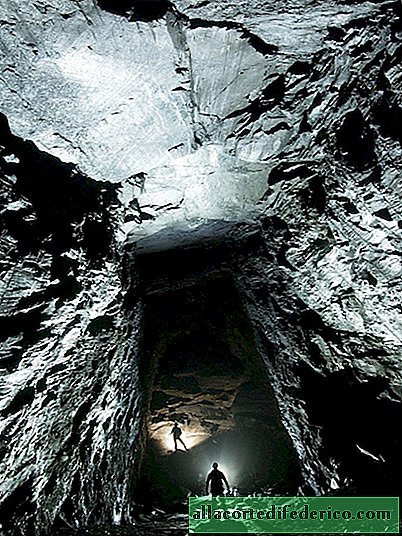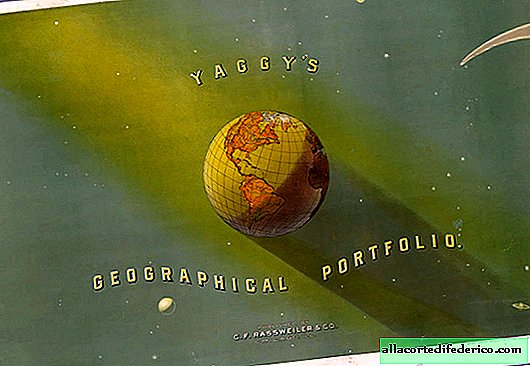Gestures and cries of Japanese railway workers
Remember, we were taught in childhood, not to point fingers that it’s impolite? ... So in Japan, where politeness is valued, like nowhere else in the world, the opposite is true. Any attentive tourist who has used some kind of excellent Japanese rail transport for some reason has probably noticed that almost all railway workers constantly point out something with their fingers and at the same time shout out various spells in Japanese.

Index finger in a white glove - a business card of Japanese railway workers
All these gestures and cries are used for a reason. They are part of a system called “Shisa Kanko” that serves to improve work safety in any area where employees must perform repetitive, uniform actions many times a day.
Shisa Kanko (in English it is "pointing and calling") was developed for the railway company of the city of Kobe, as early as the beginning of the 20th century. The Japanese empire then experienced a period of rapid industrialization, the authorities were looking for how to secure the operation of trains. The main problem was the human factor - the rules established lists of actions that the railroad workers should take, but over time the monotony of this work led to carelessness and negligence. Some checkpoints began to be skipped “at random”, which could lead to serious consequences.

The main idea of the system of gestures and shouts is that a person strengthens the mental action with a physical gesture and a voice signal. For example, it’s not enough for a train engineer to look at a green light before moving a train. He must point to a traffic light and say loudly: "Green light, you can go." Thus, not only he himself is more attentive to his actions, but everyone around him sees that he has not forgotten to check an important indicator or perform a safety measure.

The Shisa Kanko system began with just shouts: the drivers aloud announced pointers and semaphores that they saw. After a while, they added the requirement to point a finger at the object of interest.
Over time, this system has spread to all railway companies in Japan. For example, a conductor in a private company (which is not part of the JR group) checks that all the doors are closed before sending the train. We know that he is not from JR due to the lack of white gloves.

Guides and shouts are used by conductors, drivers, conductors and platform attendants. For example, an employee on the platform of the famous Yamanote line in Tokyo checks that there is no interference on the rails in front of the incoming train. At the same time, he not only shows on the way, but runs his finger along the platform from the last car to the first, demonstrating that he looked at the entire length of the station:
A study conducted in the mid-nineties by the Japanese Railway Institute showed that such a system eliminates approximately 85% of errors made by railway personnel.
Today, gestures and shouts are present throughout Japanese transport. Even the funicular driver every two meters shows and shouts loudly at the entire empty cabin.

"Ahead of the tunnel entrance!"

"There is an oncoming trailer ahead! Now we will part with it. The rails are free!"

"There is nothing ahead. Everything is fine, I'm just showing it!"


There are four on the screen and four on the panel! It all fits together! (Don't ask me what that means ...)

Each arrival and departure from the station of the super-fast Shinkansen is accompanied by many gestures and cries of the employees of JR companies.

Even the cartoonish mascot characters on the wagons demonstrate the Shisa Kanko system.

In modern Japan, not only other transport operators (buses, etc.) borrowed this system from railway workers. It was adopted by many industrial enterprises, factories, power plants and so on.

In the rest of the world, gestures and shouts are not very widespread so far, obviously, all these finger pointing seem too ridiculous to many. (Even some Japanese are embarrassed to perform these gestures clearly and instead wave their hand sluggishly in the right direction).

















